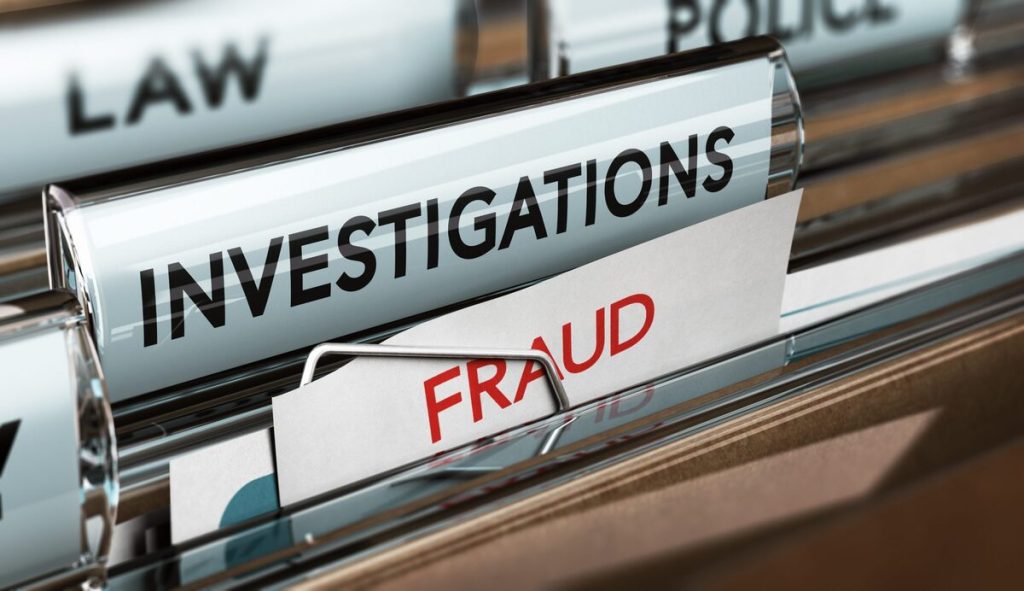Introduction
As digital banking expands, fraud increases. Bank fraud investigations are essential for maintaining financial integrity and protecting customers. In 2022, the FTC reported over 2.2 million fraud cases in the U.S., with losses exceeding $8.8 billion. This article outlines how banks investigate fraud, the steps involved, and the technologies used.
Types of Fraud
Understanding fraud types helps explain how banks investigate:
- True Fraud: Unauthorized transactions by third parties using stolen information.
- Friendly Fraud: Chargeback fraud, where cardholders dispute legitimate charges.
- Identity Theft: Fraudsters use stolen identities to make transactions.
In 2023, true fraud made up 65% of reported cases, and friendly fraud was 18%. Banks use various strategies to detect and prevent these activities.
Fraud Detection
Automated Detection
Banks use advanced software to detect fraud, analyzing transaction patterns. Visa reports that these systems scan up to 500 transactions per second, identifying inconsistencies based on factors like amount, location, and IP address. These systems flag suspicious activities in real time.
Manual Investigation
Specialized teams take over once transactions are flagged. They analyze data such as transaction history, geolocation, and device information to confirm if a transaction is fraudulent. For example, transactions from multiple countries within minutes would be scrutinized.
Merchanto.org, an official Visa and MasterCard partner in chargeback prevention, enhances fraud detection. Merchanto.org offers tools to prevent chargebacks, common in both true and friendly fraud. Learn more at Merchanto.org.

Investigation Steps
Bank fraud investigations follow structured steps to ensure accuracy and compliance.
Step 1: Receiving Alerts
Investigations start when an alert is triggered, either by an automated system or a customer complaint. Legally, cardholders can dispute transactions for up to 60 days, with most issuers extending this to 120 days.
Step 2: Evidence Collection
Investigators gather transaction records, communication logs, and account histories. Complex cases may involve forensic accountants tracing the origin of funds. For instance, they might analyze over 10,000 transactions to identify a fraud pattern.
Table 1: Types of Evidence in Fraud Investigations
| Evidence Type | Description | Example |
|---|---|---|
| Transaction Records | Logs of all transactions | Date, time, amount, location of each transaction |
| Communication Logs | Records of communication between parties | Emails, text messages, phone call records |
| Account Histories | History of account activity | Deposits, withdrawals, transfers over a specific period |
| IP Addresses | IP addresses used in transactions | IP address at the time of the transaction |
| Device Information | Data on devices used | Device ID, operating system, browser used |
Step 3: Determining Liability
Banks assess who is responsible—customer, merchant, or third party. For example, if a cardholder fails to report a lost card within two days, their liability could reach $500, according to the Electronic Fund Transfer Act. However, most banks cover these losses to maintain customer trust.
Step 4: Resolution
After determining liability, banks decide on actions, which may include:
- Reimbursing the customer: If the customer isn’t liable, the bank restores the lost funds.
- Legal Action: Large-scale fraud cases may involve law enforcement.
- Merchant Chargeback: If the merchant is at fault, a chargeback process transfers the financial burden.

Law Enforcement Collaboration
In severe cases, banks work with law enforcement. The Suspicious Activity Report (SAR) is crucial in this process, mandated by the Bank Secrecy Act. In 2022, financial institutions filed over 2 million SARs, according to FinCEN.
Table 2: SAR Filing Requirements
| Requirement | Description |
|---|---|
| Filing Threshold | Transactions over $5,000 or involving potential money laundering |
| Filing Time Frame | Within 30 days of detecting suspicious activity |
| Information Included | Transaction details, parties involved, nature of suspicion |
Banks must report significant fraud to agencies like the FBI, especially if it involves cross-border transactions or large sums of money.
Challenges in Investigation
Despite advanced technology, banks face challenges:
- Friendly Fraud: Hard to detect since transactions appear legitimate.
- Cybersecurity Threats: Sophisticated attacks make fraud difficult to trace.
- Regulatory Compliance: Investigations must comply with various regulations, such as GDPR and CCPA.
Table 3: Common Challenges and Solutions in Fraud Investigations
| Challenge | Description | Solution |
|---|---|---|
| Friendly Fraud | Cardholders dispute legitimate transactions | Better communication and dispute management systems |
| Cybersecurity Threats | Advanced persistent threats (APTs) | Multi-layered security and real-time monitoring |
| Regulatory Compliance | Global regulatory variations | Comprehensive compliance management systems |
Conclusion
Fraud investigations are essential for banking operations, protecting both customers and institutions. With fraud causing billions in losses annually, banks must update their strategies continually. Advanced detection systems, thorough manual investigations, and law enforcement collaboration help minimize fraudulent activities. Customers should report suspicious activities promptly and protect their personal information.
This approach reduces financial losses and reinforces trust in the banking system.



